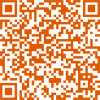cv | works | sculptures | site specific | environmental | land art | architectural | publications | exhibitions | symposia/lectures | cities | encounters | accounts
sculptures
1943> 1965> 1970> 1975> 1980> 1985> 1990> 1995> 2000> 2010> 2020>
1970−1975
This sculpture visualizes the apparent supporting structure inside its predecessor, perpendicular cylinders II.
Here I am showing this sculpture as the first in the perpendicular cylinders series. Actually I conceived this piece - two by two perpendicularly placed cylinders - in a rather elemental approach, reducing and rationalizing the form language as it evolves from complex to elementary. This is contrary to the expected process of elaborating upon a basic form, making it more complex.
But how did it all start? As often happens within my work: one sculpture leads to another. In this case I had made a linear sculpture, which I named monolinear II; and I was thinking about what form would result if the describing line of the lemniscate would be a tube which I would further bend so that the enclosed space would become completely enclosed, locked up as its nucleus; so I set out to make it and named it double torus; but halfway carving the block of limestone, following the projected views on the sides of the cube, I arrived at a geometric shape somewhat resembling what I would call a twentieth century version of a Doric capital. I stopped and saved it, naming it perpendicular cylinders, went back to the stone yard, got me another block of limestone and restarted the process. This time I finished what I had set out to do in the first place. So the sculpture which I had set out to make actually came later.
Then I studied the unfinished sculpture which I had set aside and had temporarily named perpendicular cylinders; next I decided to make a new sculpture showing its hidden four cylinders, which should start the series as perpendicular cylinders and changed the name of the saved version, adding II to it. It also showed me yet another interpretation, using its visible four half cylinders and leaving the middle section out altogether. That would become perpendicular cylinders III; I kept the 40cm height and quadrupled the surface area.

